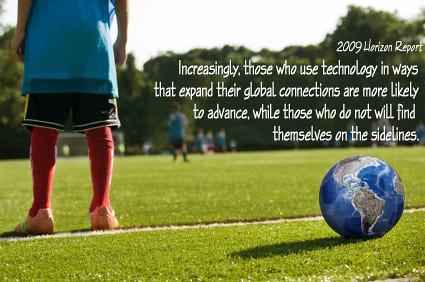¡Vámonos!
The final session today was focussed on learning styles and preferences.
- Lighting – dark, small light, whole room lit
- Seating – at a table, on the floor, lying down, standing up

- Temperature – warm, cold, hot
- Sound – silent, music, louder noise
All the above affect our learning if conditions aren’t ideal for us.
Personally, I like to work in daylight, lying on the floor or with my feet up, don’t like being hot and like a murmur of noise to learn best.
I loved Ian’s assertion that adolescents become ‘pseudo stupid’ as their brains adapt to all the changes going on in their brains. Makes a lot of sense!
We looked at VAK approaches and learned how to make history RE and Geography more kinaesthetic.
People moved from country to city due to wealth, industry, education, a better standard of living and better housing. I remembered that by holding out my left arm, travelling from the country (my armpit) to the the city (my hand) and looking at my fingers.
The Linkword approach in the 80s worked on a similar principle to pegging, linking images to things you need to remember. In language learning, masculine nouns were recalled with an image of a boxer, feminine with perfume. Language learning skills that are a key feature of current language teaching use ideas like this, encouraging making links to aid recall. For example, la sandia – a watermelon is well stuck in my pupils’ minds as we talked about how you eat it on the beach and if you drop it, it gets sandier.
Looking at Gardner’s multiple intelligences, Ian assigned each one a famous person-
Carol Vorderman – mathematical logical
The A A man / David Beckham – physical intelligence
Princess Di – interpersonal social
Mother Teresa – intrapersonal / empathy
Picasso – visual spatial
Mozart – musical
Charlie Dimmock / David Attenborough- naturalistic
Shakespeare – verbal linguistic
How can we teach to all these people? Perhaps not every lesson, but on a regualr basis?
I had to leave early to fetch J from school, but by this stage my brain was really buzzing and quite full!
I hope I’ve managed to effectively communicate some of the ideas and thoughts from today!
 I’ve already blogged about Thunks and making kids’ brains hurt which were the key ideas in this session.
I’ve already blogged about Thunks and making kids’ brains hurt which were the key ideas in this session.
However, a few other things that were interesting.
1. A useful reference for philosophy for kids – SAPERE
2. When we ask questions, we’re not comfortable with leaving silence. On average, we wait 0.9 sec before filling the silene with the answer. Thus, ‘learned helplessness’ starts. Sometimes we need time to think and process, sometimes we need to struggle for an answer to stimulate our brain.
3. The 4 Bs for finding things out
Brain
Book/board
Buddies
Boss (teacher)
4. ask for three answers to a question – allows multiple answers, multiple contributions and multiple involvement.
5. Can you raise someone else’s self esteem? Surely it’s their self esteem so you can only create the conditions for improvement to be possible. As educators, we are literally moulding the brains that will decide the future by helping the neurones in brain amke trillions of connections.
6. The difference between the arrogant and confident person is that the arrogant person will make you feel worse about yourself.
7. Self esteem is determined by feeling loveable and capable. Childen need to be hugged and praised.
More brain stuff
There are three parts to the brain –
Reptilian (lizard) – fight flight hunt
Mammalian (dog) – emotions and memories
Neo cortex – the human bit
The PFC (pre frontal cortex) holds the key to our reactions. The amygdala ‘calms’ it from its rashness. So using STAR gives the amygdala a chance to work.
Stop
Think
Act
Review
Some quotations to finish –
To teach you need to contain, entertain and explain.
Intelligence is what you use when you don’t know what to do. – Piaget
I’ve already blogged three times today about the INSET today with Ian Gilbert– twice during the INSET day and once when I returned home.
However, I haven’t even scratched the surface!
So, here is a summary of the key points I noted from session one.
“Nothing is as dangerous as an idea when it’s the only one you’ve got.”
One of the major points made was that we need to encourage thinking – that all too often we stick to closed questions, always searching for a single correct answer rather than asking questions that encourage thought and have multiple ‘right’ answers – or none at all!
An example of this was the picture below – what is it?

A gin and tonic?
A handbag?
A child hiding behind a wall?
A chair?
This sort of ‘pre-starter’ is a good way to get us in the right frame of mind for learning. And the state we’re in when we learn has a profound effect on our learning – our breathing, our surroundings, our frame of mind.
Laughter is a good way to get us in the optimum state as it releases dopamine – plenty of that today!
Next we thought about this – attitude counts for more than aptitude.
Employers are looking for creativity – people who break the rules, stand out, make a difference, to make a dent in the universe. The idea that school is just a phase you go through – important but not the be all and end all – seems obvious when you say it but that’s not often the view taken with our pupils.
I learnt a new word today – fungible (meaning digitized and sent somewhere else).
Many jobs are fungible – like accountancy; others are anchored- a nurse will be needed to apply dressings. Which led to the question – who needs a teacher when we have Google? With services like Tutorvista, are we needed? However, the teacher who leads children to learning is important, the one who doesn’t just drip feed knowledge but prepares kids for our world.
Some interesting quotations at this point –
‘It’s better to seek forgiveness than ask permission.’
‘Every act of creation starts with an act of destruction.’ Picasso
‘To know and not to do is not to know.’ Buddhist saying
The brain.
 95% of what we know about the brain we’ve learnt in the last 15 years.
95% of what we know about the brain we’ve learnt in the last 15 years.
Male and female brains are different. (see Why men don’t iron)
The RAS (reticular activating system) is particularly key, stimulated by physical activity and emotions. So things like fidgeting and fiddling could actually be ways of staying ‘with it’ in lessons rather than signals that people are not paying attention. I know that I concentrate best when I am multitasking – I was making notes or on my iPad all day today.
We did some ‘fartlek for the brain’ – particularly liked chopping and sawing!
And discussed that pace doesn’t mean speed – it rather means that the ups and downs of your lesson are appropriate to learning – lots of starts and ends – mini chunks of action/learning.
Three things to make your brain happy and healthy
1- eat antioxidants – tea coffee red wine tomatoes strawberries blueberries
2- healthy body, healthy mind
3- use it or lose it. For example – taste something new each week; brush your teeth with the other hand; listen to Late Junction
Final question of the session
Is our school a teaching school or a learning school? Is it a thinking school?
(Image by Highwaystar on picasaweb)
Found a Youtube clip of Ian Gilbert in action with a group of children, using thunks to get them thinking.
What’s a thunk?
A Thunk is a beguilingly simple-looking question about everyday things that stops you in your tracks and helps you start to look at the world in a whole new light.
Now I’m off to think up a few of my own for Wednesday.
httpv://www.youtube.com/watch?v=F0HrpGvAbxM
 One of my favourite ideas from this morning has been the idea of making our brains work by posing unanswerable questions – or thunks.
One of my favourite ideas from this morning has been the idea of making our brains work by posing unanswerable questions – or thunks.
There’s a whole website of them here but here are a few we’ve considered this morning.
What colour is Tuesday?
What is a tree? Is it less of a tree in winter when it has no leaves?
Is a broken down car parked?
Where do thoughts come from?
What is a third of love?
Is there more future or past?
I love this kind of activity that has no right or wrong answer, and makes you explain and justify your thinking. Needs a bit of practice to get it going but well worth the effort. One of the teachers with whom I work starts each day with a question like this – last week they considered ‘what can’t you doing sitting down?’
Provoked a great discussion!
And if you’re on Twitter and fancy receiving some thunks -called #twunks – follow @itlworldwide
Latest #twunk below!
 Today I’m at a cluster training day entitled Practical strategies for thinking learning and motivation.
Today I’m at a cluster training day entitled Practical strategies for thinking learning and motivation.
It’s being led by Ian Gilbert of Independent Thinking who, so far, has given us all lots to digest!
More detail later as I start to digest what we’re discovering, but so far I have learnt that-
I shouldn’t have a job
AQA stands for ask any question
Picasso said ‘every act of creation starts with an act of destruction.’
‘It’s better to seek forgiveness than ask permission.’
Photo – Davide Restivo on Flickr
¡Vámonos! ©2026. All Rights Reserved.
Powered by WordPress.
Theme by Phoenix Web Solutions







